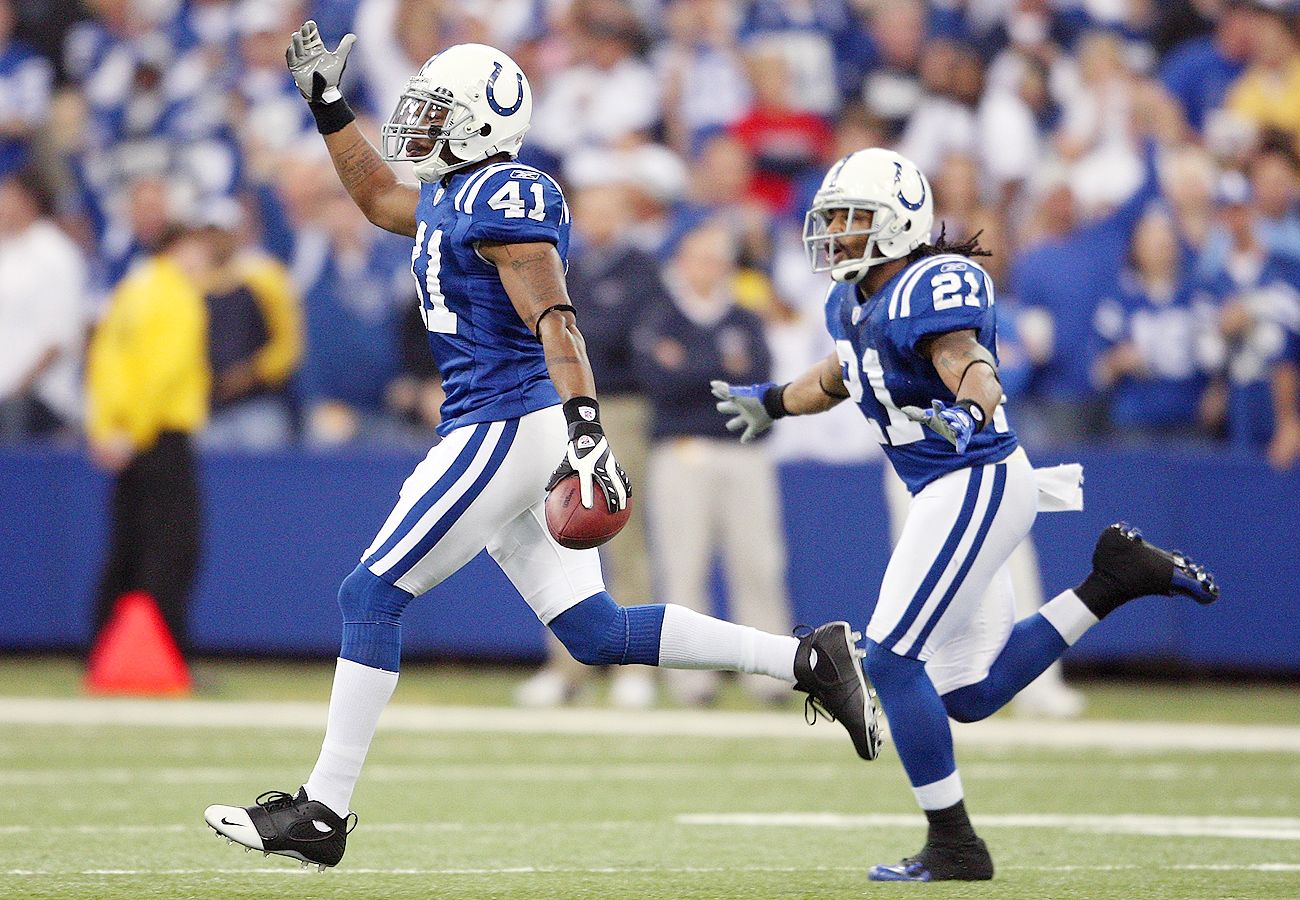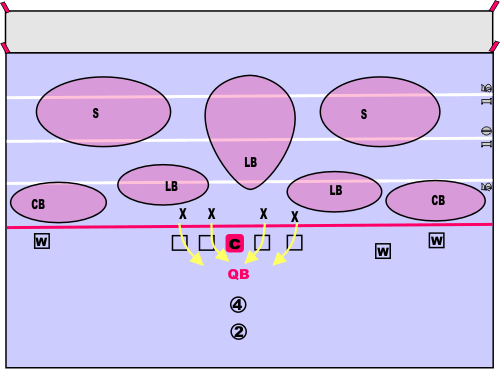Colts Academy
Understanding Holding Penalties in the NFL
Nov 16th

Colts defensive end Robert Mathis running through a hold in the preseason. (Scott Cunningham | Getty Images)
One of the most discussed penalties each week in the NFL is holding. Fans for teams like the Colts who have dynamic pass rushing defensive ends and linebackers are more likely to constantly discuss and complain about players like Dwight Freeney or Robert Mathis getting illegally held by opposing offensive linemen who attempt to slow their progress to the quarterback.
The problem is that most fans are not really clear on what offensive linemen are able to do with their hands in the process of blocking pass rushers (sometimes it seems like the officials are unsure too). Accordingly, debates ensue between fans from the competing teams about whether or not the outcome of the game was impacted by poor officiating that would have otherwise resulted in sacks, turnovers, changes of possession, and would have turned the tide of a game. More >
The Role of Safeties in the Colts Defense Part 2
Oct 9th

Jamie Silva helped off of the field after tearing his ACL, ending his 2010 season. (AJ Mast | AP Photo)
At no time could it be more relevant to write a story about the role of safeties in the Colts defense than during a year which has seen five, FIVE!, strong safeties go out for the year or for a significant portion of the season. This rash of injuries puts the Colts in a position to put a player into a starting role for the first time in a meaningful regular season game not named Bullitt, Bethea, or Sanders for quite a few years. Don’t get me wrong, there have been occasional one game fill-ins in the past, but never a player who was expected to play somewhere between one-quarter, one-half of the season, or longer.
Undrafted rookies Mike Newton and Brandon King will be competing against journeyman veterans DaJuan Morgan and Aaron Francicso for the responsibility. This story will discuss what these players will be asked to do, the role safeties play in the Colts defense, and how it is possible that so many players could get injured at one position in one season. More >
The Role of Defensive Tackles in the Colts Defense
Sep 23rd
One position that has undergone a great deal of development in Indianapolis is the defensive tackle position. In 2007 and 2008 the Colts had the smallest defensive tackle rotation in the NFL. By the smallest, it was not just a little smaller, it was 50 or more pounds lighter than the second lightest defensive tackle group in the league.
The 2009 season saw that change. While the Colts may still field the lightest defensive tackles in the NFL, the difference between Antonio Johnson, Daniel Muir, Fili Moala, Mitch King, and Eric Foster from the rest of the league is closer than the Colts have been since the 2005 and 2006 seasons, when players like Booger McFarland and Corey Simon were on the roster.
 US Presswire | Getty Images | AP Photo
US Presswire | Getty Images | AP Photo
Daniel Muir | Antonio Johnson | Eric Foster
The Role of Linebackers in the Colts Defense
Sep 16th
After the Colts gave up 257 yards rushing against the Houston Texans last Sunday, a lot of questions have been asked. One of the biggest questions is, how could this complete defensive breakdown occur?
One of the primary responsibilities of the defensive front seven, which includes the Colts four defensive linemen and the linebackers, is stopping an opponents running game. Every team handles this responsibility differently but in the Colts system, which uses smaller defenders than any other team in the league, there is a specific process the defenders must follow to achieve their goals.
 Eric Gay | AP Photo
Eric Gay | AP Photo
Houston Texans running back Arian Foster punches a run in for a touchdown.
The Role of Defensive Ends in the Colts Defense
Aug 25th
Primarily due to the outstanding play of players like Dwight Freeney, Robert Mathis, and Raheem Brock, the Indianapolis Colts are known as one of the most dangerous pass rushing teams in the NFL. The amount of pressure the Colts traditionally generate from the defensive end position demands that opposing offensive coordinators adjust offensive line, running back, and tight end blocking assignments to ensure their quarterbacks have time to find an open receiver.
There is a downside to such aggressive pass rushing. The traditional role of defensive ends is to contain the football. The theory behind this responsibility is if defensive ends can turn the ball inside, the ball-carrier is forced to run in the most highly trafficked and patrolled area of the field (lots of defenders). If the ball gets outside of the defensive ends, generally only cornerbacks, safeties, and linebackers on one side of the field have a chance to stop the ball-carrier before he can find open space and pick up chunks of yards.
 AP Photo
AP Photo
The Role of Safeties in the Colts Defense
Jun 28th
The Indianapolis Colts have traditionally required a great deal out of their safeties. In years past the safeties played a key role in the run defense, often with Bob Sanders or Melvin Bullitt sneaking up close to the line of scrimmage to act as a fourth linebacker. Last year, in defensive coordinator Larry Coyer’s first season, the safeties returned to more of a traditional role generally, staying deep to provide support in pass coverage, sometimes coming up to blitz rather than in pure run support.
This year promises to potentially change things even more. For the first time since the playoffs in 2006, the Colts interior defensive line is beginning to take legitimate form. Antonio Johnson, Daniel Muir, Eric Foster, and Fili Moala promise to present a solid front along the interior against the run. It is expected that Moala will show real progress this year and the Colts have added other positive potential players to boost that depth in Mitch King and Ricardo Mathews. Ultimately, this should help Coyer keep the safeties in a more traditional capacity, covering passing lanes, possibly in blitz packages, and as third level run defenders instead of as make-shift linebackers.

ESPN Image
Understanding the Colts Defense
May 26th
Recently the National Football Post started a series that hopes to give football fans a basic understanding of how traditional NFL defenses work. To start, Matt Bowen wrote a piece explaining the basic Cover 2 defensive arrangement in this story.
The diagram shows how the safeties and middle linebacker traditionally will drop into a what amounts to a cover 3 arrangement, meaning there are three players who drop back in a “deep zone” in their respective areas on the field. This defense encourages opponents to get rid of the ball in a short field, limits yards after the catch, and relies on the defensive linemen to generate pressure before opposing receivers can stretch the field and get behind the zone coverage.

Mohammed Alo | The Football Times


